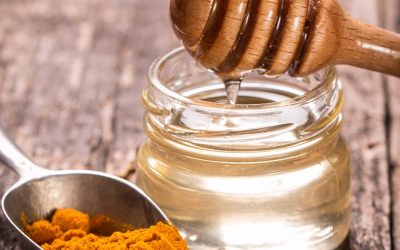Colour: brownish amber-dark amber
Flavor: malty, resinous, less sweet than other honeys
Intensity of flavor: medium-strong
Water content: low, under 18%
Viscosity: medium
Fructose content: 37%
Glucose content: 32%
Disaccharides content: 11%
Melezitose content: 3%
Maltose content: 9%.
pH: 4.6
Acidity: high
Mineral content: high, especially phosphorus, potassium, calcium, sulfur, magnesium, zinc, boron, iron, copper.
Crystallization: very slow, after 18 months in coarse crystals
Health benefits of pine honey
Pine honey has anti-inflammatory properties, it’s antioxidant, immunostimulant, cleanser, helps in the cure of some bacterial, dermatological, degenerative, inflammatory and autoimmune diseases.
When used externally it is beneficial for wounds and anti-rheumatic diseases.
It is also used against ovaries inflammation.
It is useful in respiratory conditions:
Used as an expectorant and breathing reliever for the lung diseases and chronic cough. Good for asthma and bronchitis. If the honey is consumed with the comb, it will have a bronchodilator effects.
It has antibacterial properties:
The study “ANTIBACTERIAL POTENTIAL OF HONEY FROM DIFFERENT ORIGINS: A COMPARSION WITH MANUKA HONEY“, by Sulaiman Alnaima et al. and published in The Journal of Microbiology, Biotechnology and Food Sciences in 2012, describes a comparison made between 18 honey varieties, both floral and forest honeys with manuka honey.
The results showed that Greek pine honey has a broad spectrum antibacterial activity (the peroxide type), followed by Scottish Heather, Chilean Ulmo, New Zealand Beech and Jarrah Honey. From all the tested bacteria, 4 of them were most sensitive to Greek pine honey: S.marcescens, and E. coli (with the highest sensitivity) B. sphaericus and B. subtilis.
It has anticancer properties:
In 2009, Tsiapara et al. investigated the influence of Greek honey extracts (thyme, pine and fir honey) on the oestrogenic activity and cell viability of breast (MCF-7), endometrial (Ishikawa) and prostate (PC-3) cancer cells. Thyme honey reduced the viability of Ishikawa and PC-3 cells, whereas fir honey stimulated the viability of MCF-7 cells. The authors concluded that modulation of oestrogen activity was linked to the rich phenolic content of Greek honeys and suggested that a thyme honey-enriched diet may prevent cancer related processes in breast, prostate and endometrial cancer cells.¹
It has strong antioxidant properties, compared to the more common floral honeys. So it will help in any condition that is determined by oxidation.
It helps in dermatological conditions:
For acne: Eat 6 teaspoons of pine honey. This type of honey will treat your acne which is caused by an imbalance of hormones, constipation or heavy accumulations of toxins in the body.
For open skin pores, we should apply a mixture made of 6 tablespoons of pine honey and 4 tablespoons from a decoction of willow bark (Boil 20 grams of willow bark in 100 ml of water for 10 minutes). The mixture is left on our complexion for half an hour to an hour, then removed with some carbonated water.
Repeat the treatment for 7 days in a row and you will see the results immediately.
For withered, aged skin apply a mask of simple pine honey for half an hour to one hour. Clean it with milk and then apply one of your usual cream. The treatment has to be done every evening, for 30 days. Meanwhile internally should be taken polifloral honey with royal jelly 2%. The effects are spectacular.
For cellulite, have a massage with honey mixed with a few drops of essential oil of lemon and/or orange. The mixture should be spread on the affected area and easily massaged. For 10 minutes the hands should be placed on the skin and then pulled up. The skin will be cleaned with warm water.
References:
¹ TSIAPARA, A; JAAKKOLA, M; CHINOU, I; GRAIKOU, K; TINA TOLONEN, V V A P M (2009) Bioactivity of Greek honey extracts on breast cancer (MCF-7), prostate cancer (PC-3) and endometrial cancer (Ishikawa) cells: Profile analysis of extracts. Food Chemistry 116: 702-708.
Botanical species giving unifloral honey in Europe, by Livia PERSANO ODDO et al., Apidologie 35 (2004) S82–S93
CURATIVE MELLIFEROUS PLANTS IN TURKEY, by Orhan Kosi
http://ioanaginghina.blogspot.ro/2012/12/mierea-de-mana-de-brad.html
http://www.produsedeapicultura.ro/miere-de-albine/produse/1-miere-de-brad.html
http://www.healwithfood.org/health-benefits/pine-honey-buying-tips.php#ixzz3aJyQTqT6
http://sanatate.bzi.ro/beneficiile-mierii-de-mana-de-brad-11976
pine featured picture credit ewoerlen published under CC via flickr.com



